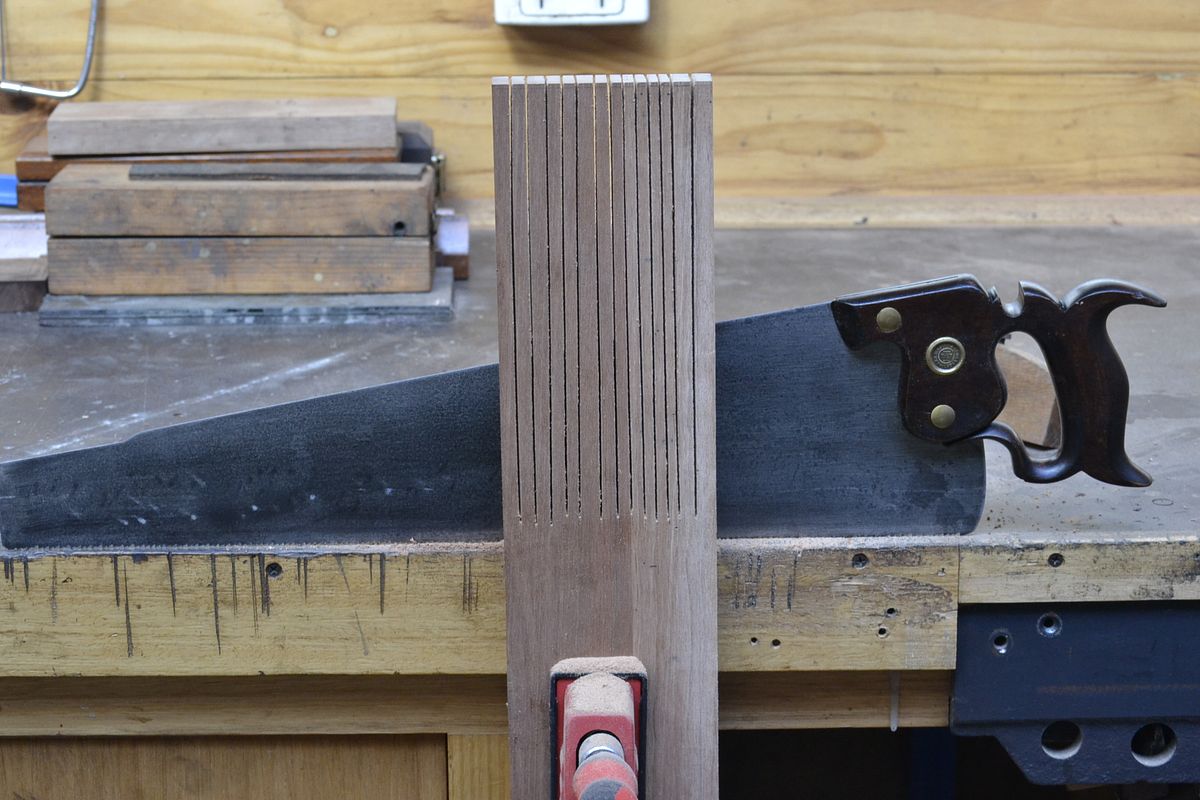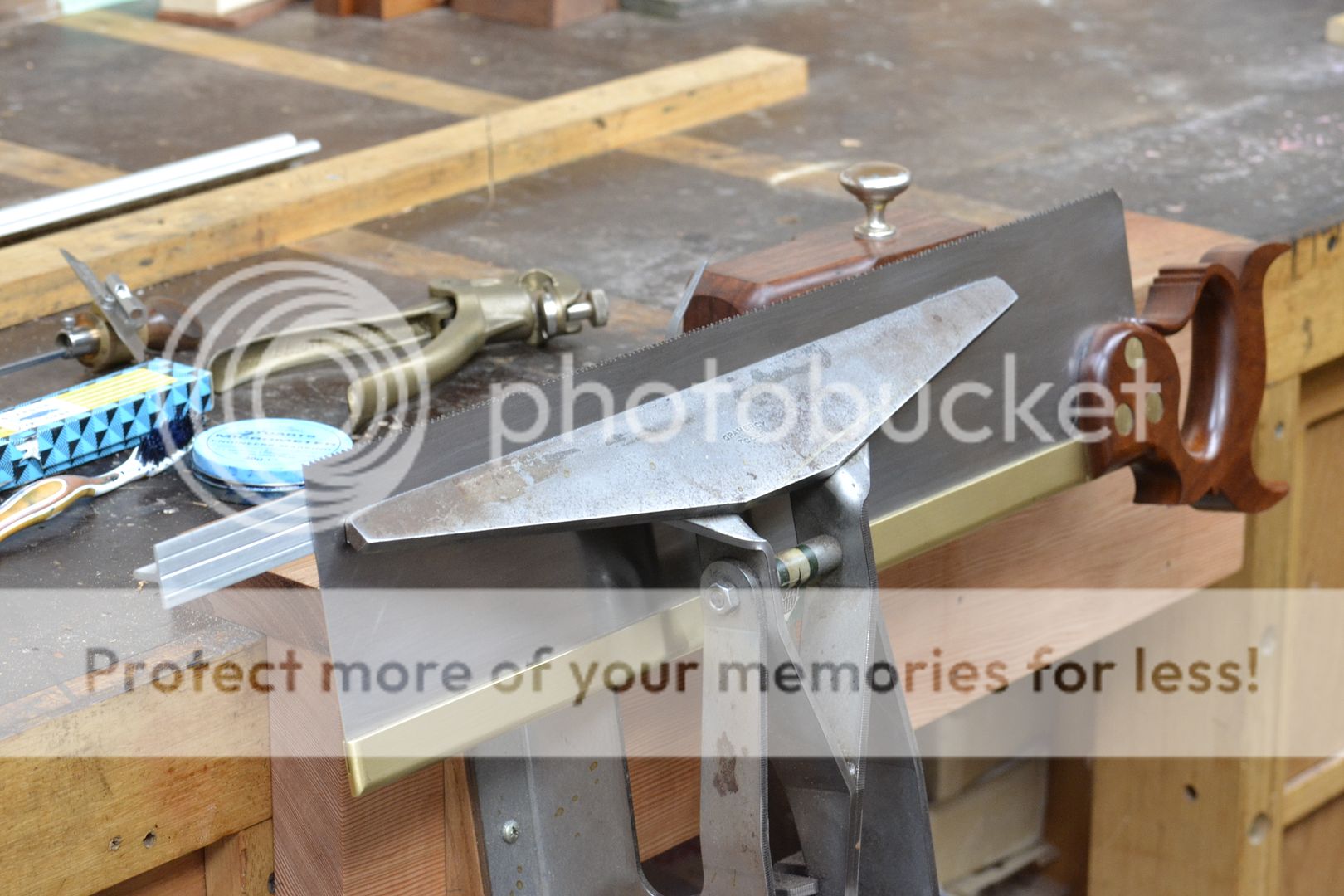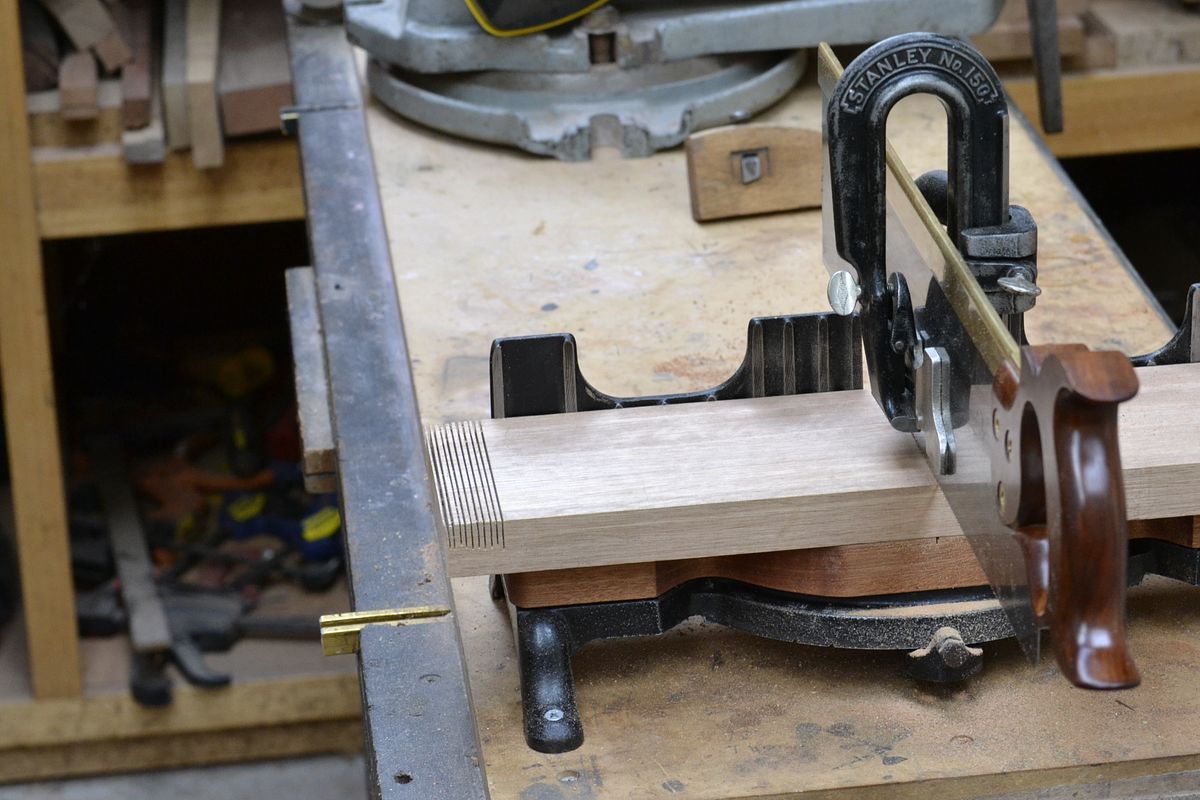woodbrains
Established Member
Hello,
Ian Kirby, with whom I'm sure our American friends are familiar, has famously commented on how tenon saws do not easily remove thier own waste. I'm not saying any if this has dramatic consequences, but every little helps. I find it absurd for anyone not to get the best from their tools if it is in their power. When you sharpen your own saws then it makes little or no difference to add slope. If there is a small advantage gained when actually sawing by adding slope, then where is the problem. After all, the saws exist to be sawn with, not sharpened. So when it does have to be done, it might as well be done to maximise sawing efficiency, even by a degree.
Hybrid tooth pattern saws are very popular. For tenons, I have a rip and a crosscut that I use in tandem. If I had only one saw it would be a hybrid. A crosscut for cutting the tenon cheeks is not nice IMO. A very sharp rip is a bit grabby for the shoulder cuts. I'm practiced enough to make these cuts with a light touch, (and a deep knife line to stop blowout)) but inexperienced people find that very difficult. A hybrid is a good compromise.
Mike.
Ian Kirby, with whom I'm sure our American friends are familiar, has famously commented on how tenon saws do not easily remove thier own waste. I'm not saying any if this has dramatic consequences, but every little helps. I find it absurd for anyone not to get the best from their tools if it is in their power. When you sharpen your own saws then it makes little or no difference to add slope. If there is a small advantage gained when actually sawing by adding slope, then where is the problem. After all, the saws exist to be sawn with, not sharpened. So when it does have to be done, it might as well be done to maximise sawing efficiency, even by a degree.
Hybrid tooth pattern saws are very popular. For tenons, I have a rip and a crosscut that I use in tandem. If I had only one saw it would be a hybrid. A crosscut for cutting the tenon cheeks is not nice IMO. A very sharp rip is a bit grabby for the shoulder cuts. I'm practiced enough to make these cuts with a light touch, (and a deep knife line to stop blowout)) but inexperienced people find that very difficult. A hybrid is a good compromise.
Mike.







